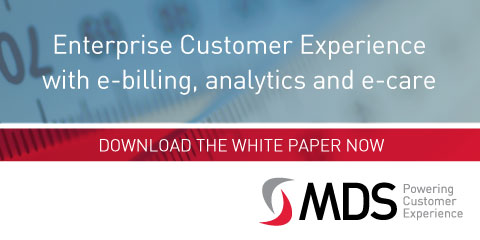|
|

article page
| 1
| 2
| 3
| 4
If the overall objective is strong and sustainable business growth, and the
strategic solution is transformation, then a new approach is required that can
deliver immediate gains in efficiency and growth and has a clear line of sight
to long-term business objectives.
As a new approach to Business Support Systems (BSS), the introduction of a
unified data integration layer, enabled by process analytics, can provide
horizontal business-enablement that enables CSPs to leverage their existing
asset base and reduce congestion on middleware. The integration layer approach
offers consolidation of data, process and product for a seamless and adaptive
customer experience.
Through the integration layer, data can be extracted from any number of vertical
billing systems, potentially each with their own unique format, and can be
transformed from a disparate data set into a common data set according to
dynamic business rules. This can also be applied to unbilled records, whereby
the requirement becomes real-time.
|
|
The integration layer approach consolidates data, process and product for a seamless and adaptive customer experience. |
|


mechanisms calculated in complex
rating that is core to enterprise billing
systems, which is a major delay factor
in time to market.
Therefore, an independent catalogue of products and services must sit above the
legacy catalogues that exist for metered traffic pricing, providing a unified
repository for all offerings, including metered traffic, priced item, software
license, and content. The repository must allow the same core product or service
to be presented according to the channel that is selling it or the customer that
is consuming it, in multiple currencies and languages, and with variable
discounting to protect margin.
With a single view of product, orders and upgrades for all channels, including
new customers, existing customer, dealers, and resellers, can be managed through
a single, customisable portal. This presents a seamless customer experience for
convergent offerings and can reduce the costs associated with maintaining
multiple catalogues.
|
|
|
|
|

With data integration, customer records historically spread across multiple
billing systems are unified to present a single view of the customer that, for
the CSP, provides meaningful insight and an increased awareness of true customer
value. This can significantly improve customer experience and help to support
retention activities.
With a common data set, the CSP can offer one invoice or e-bill for all
services, provide an adaptive online experience, and support a single point of
contact for all inbound enquiries, all of which help to reduce the cost to serve
and promote customer loyalty.
The integration layer also delivers a single point of reporting that presents
the CSP with timely and relevant information across its business – ‘pools of
knowledge’ rather than ‘oceans of data’. This is an essential enabler of
meaningful and consistent customer interactions.
Convergent Offerings through Product Integration
Established service providers will
typically have more than two thousand
tariffs across multiple vertical
catalogues, and launching new
products and services can take
anywhere between 6-12 months. The
complexity of new product introduction
means that most CSPs are restricted to
very few launches each year. The
dilemma exists that products and
services in a convergent offering are -in
addition to billable traffic - priced items,
software licenses and content based.
Implementing these products and
service types does not require the
product and tariff code based pricing
|
|

Order Management and Service Delivery through Process Integration
The business processes associated with order management and service delivery
have touch-points that spread across the customer lifecycle, including
acquisition and in-life moves and changes. This is especially relevant in the
delivery of convergent services, which introduce new challenges in all areas.
For customer acquisition, there are concurrent processes for service and
hardware provision that have unequal delivery cycles within the same customer
order. An example of a short-running cycle could be the delivery and activation
of a SIM card. A long running cycle might be the deployment and configuration of
an IP PBX. Process integration enables the CSP to balance these unequal delivery
cycles and provide a seamless on-boarding experience.
For in-life support, there is a need to dynamically synchronise and manage
customer moves and changes, including changes to their fixed and mobile dial
plan. Additionally, Unified Communications and advanced Fixed-Mobile Convergence
services can introduce IP, SIP and Low Power GSM elements as part of a solution,
which can involve additional systems from third-party service providers. Process
integration enables the CSP to dynamically synchronise moves and changes across
all service elements in real-time, removing the cost and complexity of manual
support and delivering the capabilities to support volume sales.
article page
| 1
| 2
| 3
| 4
|
|
|






